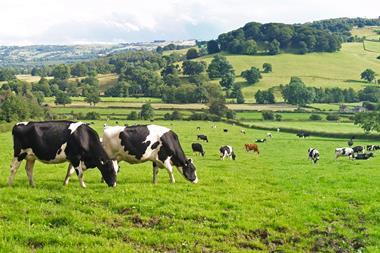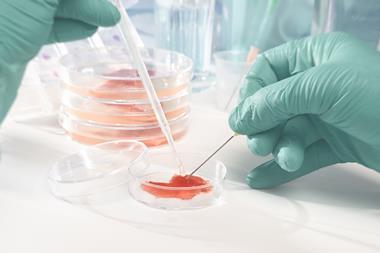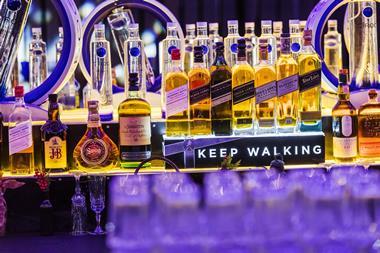Wild boar is attracting major retailer interest as an unusual product that is low in cholesterol and big on flavour, as Simon Gaskell, owner of the Real Boar Company, explains Keeping wild boar is very different from pig farming. We have 150-200 animals of German and Polish stock in a 20-acre wood on our smallholding in the Cotswolds, and they revert to being wild very quickly. The stud boars have three-inch tusks that self-sharpen, making my wellies like colanders, but they are charming if unruly animals. It takes 18 months from birth to slaughter of the boarlets, compared with six months for pigs. We try to sell the loins, haunches and whole carcases fresh to order. We also wanted a value-added product with a longer shelf life so we could control supply, and that led to what I believe is the only English wild boar salami grown and produced in the UK. It has appeared on the menu at The Fat Duck and The Waterside at Bray, and has been served by The Cinq Restaurant at George V in Paris, who couldn't believe it had been made by an Englishman . It sells in big sizes for slicing, or in presentation tubes as gifts and also in pre-sliced vacuum packs. Shelf life is up to six months, and we supply farm shops and delis. We are talking to a major retailer, and River Cottage has just ordered some. I studied agriculture and have kept pigs before, but was working in event management in Australia when I decided to come back to do something slightly different with an animal I love and a small acreage of woodland. We started with two 'sounders' (families of wild boar) totalling 30 sows in 2004 and have now been selling our wild boar meat for two years. The salamis started in 2006, when we sold 70, and that has risen to 700 between July and December last year, and now stands at up to 50 a week. Our 400g and 800g salamis retail for between £11 and £23. We also have a Wild Boar and Venison Salami with Red Wine, and a Wild Boar Chorizo with Red Wine, and a cold smoked wild boar ham. We are very aware this is a niche market and not an everyday meat, and being slow-growing it is more expensive. But it is very healthy, having a fat content of 5.2g per 100g compared with 22.5g for pork. Saturated fat content is 2.9g compared with 8.3g for pork. The animals live in a natural environment, feeding on acorns, fungi, roots, cherries and seeds, supplemented with local potatoes and sow conditioner pignuts. You need an annual Dangerous Wild Animals licence to keep wild boar, and to invest in security-type fencing with hot wires and a handling yard.
Close menu
- Home
- Retail & Wholesale
-
Products & Suppliers
- Back to parent navigation item
- Products & Suppliers
-
Product Categories:
- Back to parent navigation item
- Product Categories:
- Alcoholic drinks
- Bakery
- Cereals & breakfast
- Cheese
- Chicken & poultry
- Chocolate
- Confectionery
- Crisps, nuts & snacks
- Dairy
- Fish
- Fresh produce
- Frozen
- Household
- Meat
- Own Label
- Sauces & condiments
- Seasonal
- Soft drinks
- Vaping
- Vegan & plant-based
- World foods
- Suppliers
- People
- Reports & Data
-
Topics A-Z
- Back to parent navigation item
- Topics A-Z
-
Popular topics:
- Back to parent navigation item
- Popular topics:
- Cost of living crisis
- Crime
- Deposit Return Schemes
- Finance
- Government & Regulation
- Health
- Inflation
- Loyalty
- Marketing
- Mergers & Acquisitions
- New Product Development
- Sourcing
- Supply chain
- Sustainability & environment
- Technology
- Ultra Processed Foods
- Vaping
- A-Z all topics
- Content by type:
- Events
- Subscribe now
Sign in to comment on this article
Not logged in before? Register for FREE guest access today.
You will be able to:
- Read more stories
- Receive daily newsletters
- Comment on stories
Advert


















No comments yet